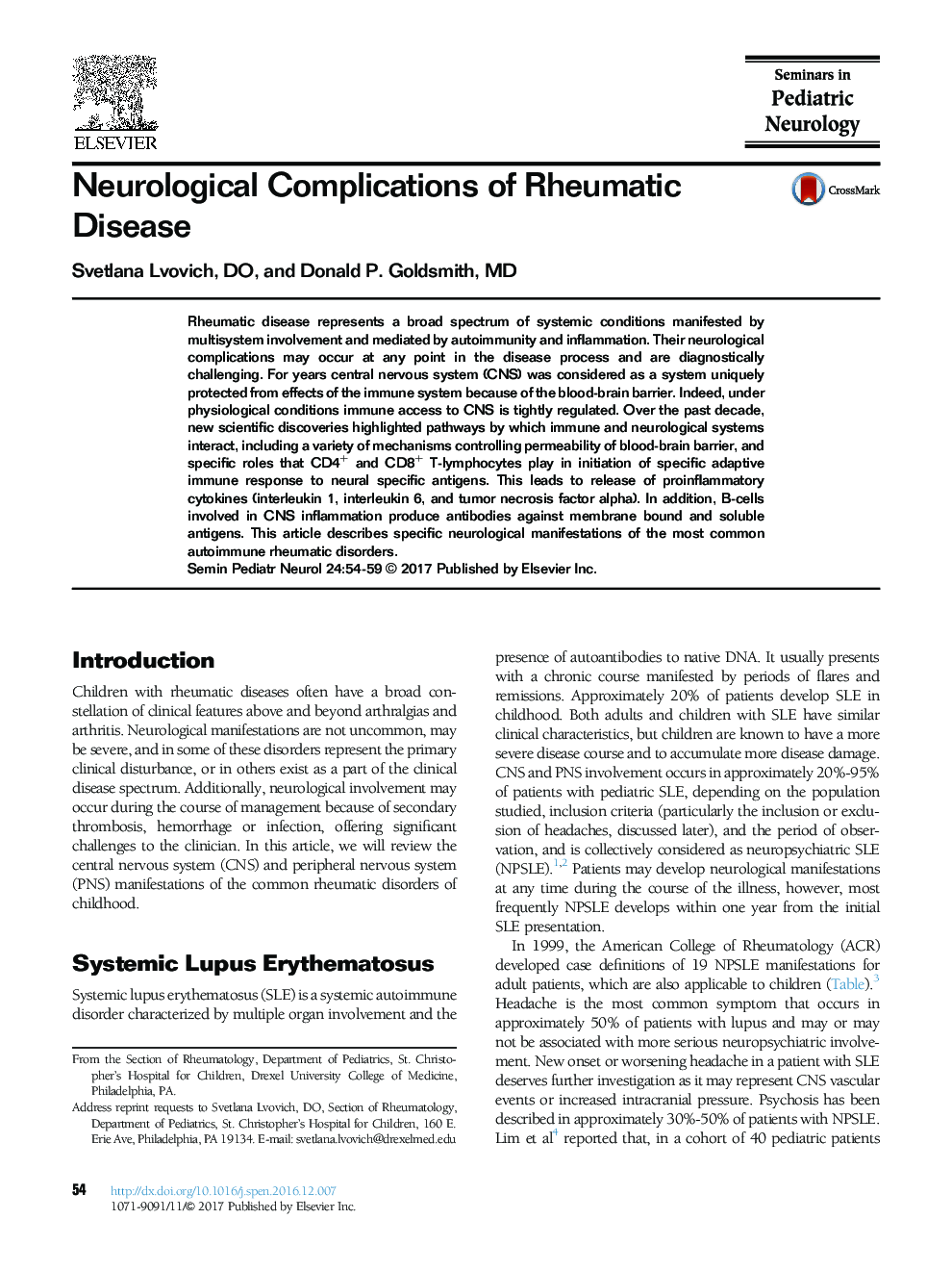| Article ID | Journal | Published Year | Pages | File Type |
|---|---|---|---|---|
| 5633550 | Seminars in Pediatric Neurology | 2017 | 6 Pages |
Rheumatic disease represents a broad spectrum of systemic conditions manifested by multisystem involvement and mediated by autoimmunity and inflammation. Their neurological complications may occur at any point in the disease process and are diagnostically challenging. For years central nervous system (CNS) was considered as a system uniquely protected from effects of the immune system because of the blood-brain barrier. Indeed, under physiological conditions immune access to CNS is tightly regulated. Over the past decade, new scientific discoveries highlighted pathways by which immune and neurological systems interact, including a variety of mechanisms controlling permeability of blood-brain barrier, and specific roles that CD4+ and CD8+ T-lymphocytes play in initiation of specific adaptive immune response to neural specific antigens. This leads to release of proinflammatory cytokines (interleukin 1, interleukin 6, and tumor necrosis factor alpha). In addition, B-cells involved in CNS inflammation produce antibodies against membrane bound and soluble antigens. This article describes specific neurological manifestations of the most common autoimmune rheumatic disorders.
